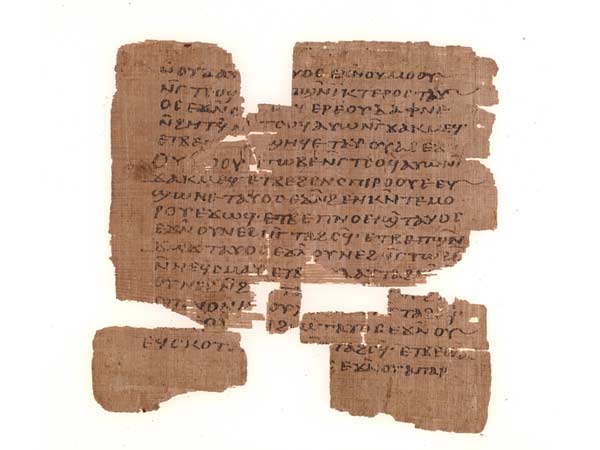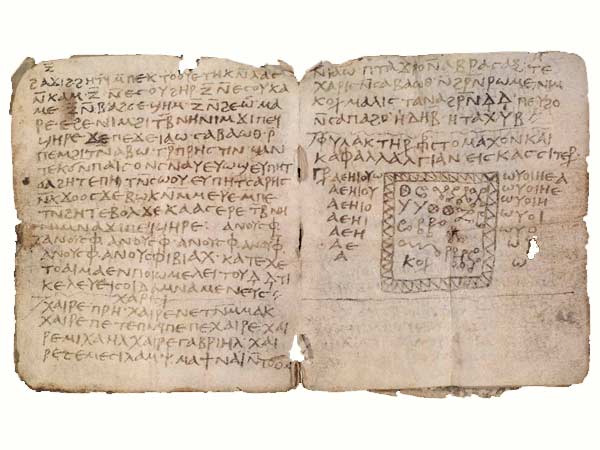The papyrus book or codex (left) is part of a larger collection known as the “The Coptic Wizard’s Hoard” (P. Mich. inv. 593–603, 1294), which comprises eight Coptic magical texts copied by five scribes sometime between the fourth and the seventh centuries AD. The codex contains two magical texts. The first includes a list of thirty-two medical recipes.
The small codex (right) consists of just fourteen pages — three sheets and a half or seven leaves. The content is a fascinating mixture of folk recipes and healing spells that address medical conditions such as gout, eye disease, pains from teething, fevers, pregnancy and childbirth, abdominal problems, skin disease, headaches, toothaches, constipation, and even mental illnesses. On page eight, we find instructions for making an amulet to cure stomach ailments and headache. The author recommends writing on a piece of tin two series of vowels in the shape of inverted isosceles triangles. The vowels are arranged as a palindrome, so that the lines can be read both ways.



